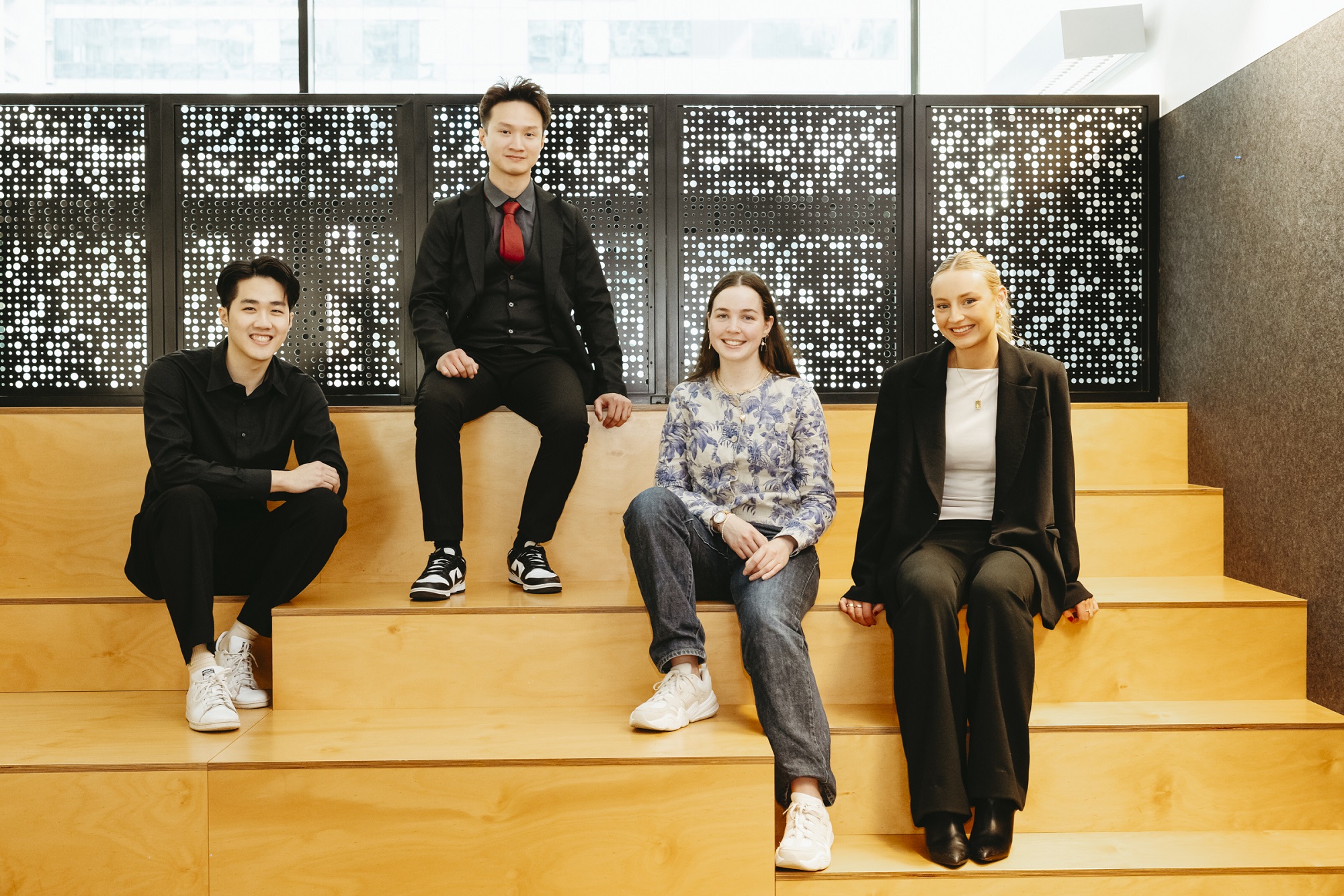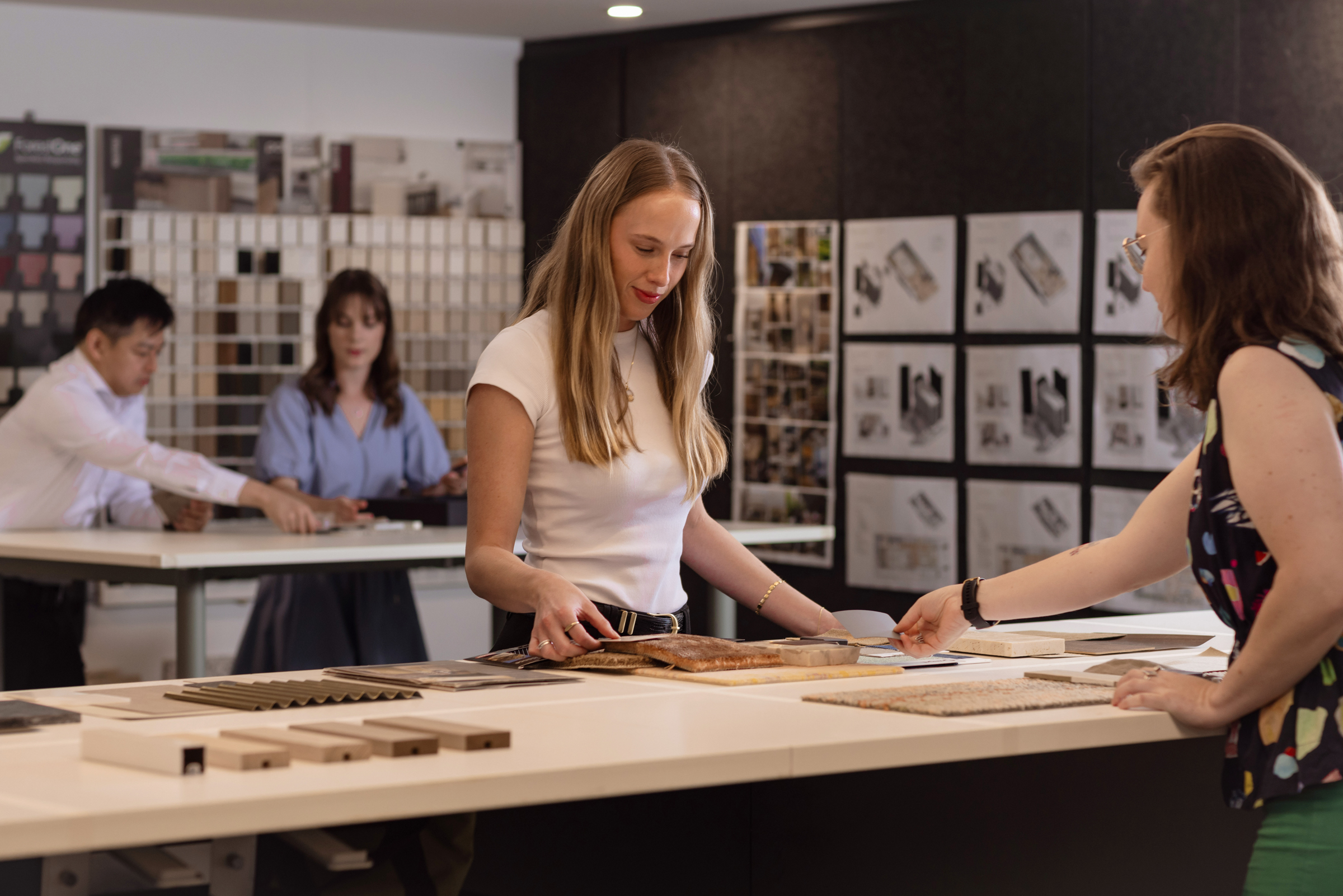As part of the 2023 Open House Melbourne Weekend, Gray Puksand hosted The Emerging Designers Festival, a competition and exhibition showcasing the work of talented design students, moderated by our Melbourne Partner and Commercial Sector Lead Nik Tabain.
Aiming to connect with the designers of our future, Gray Puksand invited current architecture and design students to prepare a design concept to solve the future problems of Melbourne’s built environment, particularly to accommodate the current housing crisis and our city’s population growth.
Following a strong response to the design brief from many students across Melbourne, three finalists were selected to respond to this year’s theme of Collective City.; As Melbourne expands to reach a projected population of 8 million by 2050; how will we reinvent, repurpose, and adapt our city to live better together?
We were first introduced to Monash University student Amelia Purtell with her project “The Pillars”. Amelia’s vertical building design focused on what Melbourne’s CBD could look like in the future by creating gardens, playgrounds, and sporting facilities above the city skyline. Amelia proposed three pillars to cater to and extend Melbourne’s diverse population by creating inclusive environments in a city with limited ground space.
Deakin University duo Jek Kee Lim and Nikkie Chia were next to present their idea titled “#Afloat” which embraced Melbourne’s waterfront as an opportunity for expansion. Their concept utilised floating modules to conserve the limited surrounding landscape, using renewable energy wherever possible to reduce carbon emissions and the city’s overall footprint. Jek Kee and Nikkie’s concept incorporated the use of bio-rocks – inspired by the Oceanix project in Busan – allowing for the growth of aquatic plants and attracting marine life.
The third and final presentation “City Circles” was proposed by Deakin University student Lily Simpson which drew inspiration from Indigenous artwork and symbols to form a central space for fostering connection. Lily’s concept focused on connecting Melbourne’s growing population with the land in the form of circular meeting areas to gather for work, recreation, or social activity. The proposed “City Circles” are intended to grow and emerge with our city’s evolving population and extend out of the CBD in a similar form.
As judged by Gray Puksand’s Nik Tabain, Mark Freeman, Kara Thapar and Georgina Campbell, Lily Simpson was deemed by the judges as the winner with her “City Circles” concept. Responding to the criteria, Lily proposed a clear and concise design approach, incorporated sustainability and offered a unique and innovative vision. As a result, Lily was offered an internship at Gray Puksand Melbourne studio.
Thank you to all finalists who presented their design ideas and everyone who contributed to a meaningful conversation about shaping our city for the future.












